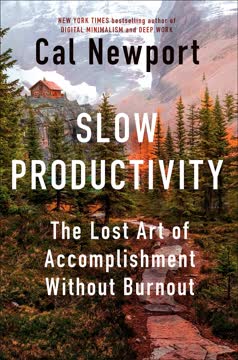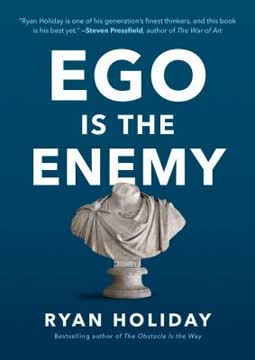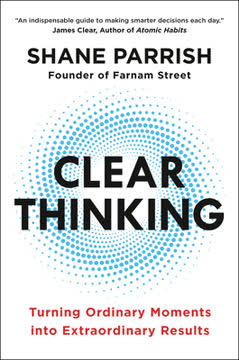Key Takeaways
1. Pain is essential for happiness and personal growth
Pain is inevitable. Suffering is optional.
Pain as a catalyst. Pain serves as a powerful catalyst for personal growth and self-discovery. It challenges us to confront our limitations, reassess our priorities, and develop new coping mechanisms. Through painful experiences, we gain valuable insights into our strengths and weaknesses, ultimately leading to greater self-awareness and emotional maturity.
Contrast enhances appreciation. The experience of pain provides a necessary contrast that allows us to fully appreciate moments of joy and contentment. Without pain, pleasure becomes mundane and loses its significance. This contrast effect is rooted in our neurological and psychological makeup, highlighting the interconnectedness of positive and negative experiences in shaping our overall well-being.
2. Modern comfort has made us less resilient and more anxious
We have come to treat even commonplace experiences of pain and sadness as pathological, as things that need to be medicated and eradicated.
Overprotection breeds vulnerability. The modern pursuit of comfort and the avoidance of discomfort have inadvertently created a generation less equipped to handle life's inevitable challenges. This "cotton wool culture" has led to:
- Increased anxiety and depression among young people
- Reduced ability to cope with failure and disappointment
- Heightened sensitivity to perceived threats and criticisms
Recalibrating expectations. To build resilience, we must recalibrate our expectations of comfort and actively seek out manageable challenges. This involves:
- Encouraging calculated risk-taking in children and young adults
- Embracing failure as a learning opportunity
- Cultivating a growth mindset that values effort and perseverance over innate talent
3. Shared pain fosters social bonding and cooperation
People try to make sense of things, and if they don't know the answers they make them up, because for some, a wrong answer is better than none.
Pain as social glue. Shared painful experiences create strong social bonds and increase cooperation within groups. This phenomenon is observed in various contexts:
- Military training and combat situations
- Extreme sports and endurance events
- Cultural rituals and initiation ceremonies
Evolutionary basis. The tendency to bond through shared adversity likely has evolutionary roots, as it promoted group cohesion and survival in challenging environments. Modern research has shown that:
- People who experience pain together display increased trust and prosocial behavior
- Shared suffering can lead to increased empathy and compassion for others
- Communities often come together and display increased altruism in the face of disasters or crises
4. Painful experiences enhance focus and mindfulness
A whip is a great way to get someone to be here now. They can't look away from it, and they can't think of anything else.
Pain narrows attention. Painful experiences force us to focus on the present moment, effectively silencing the mental chatter that often distracts us from fully engaging with our surroundings. This intense focus can lead to:
- Increased sensory awareness
- Reduced rumination on past or future concerns
- A heightened sense of aliveness and presence
Alternative path to mindfulness. While traditional meditation practices aim to cultivate mindfulness through quiet reflection, pain can provide a more immediate and visceral route to present-moment awareness. This explains why some individuals seek out intense physical experiences, such as extreme sports or intense workouts, as a means of achieving mental clarity and focus.
5. Adversity builds resilience and toughness
What doesn't kill you makes you stronger.
Stress inoculation. Exposure to manageable levels of stress and adversity can build psychological and physiological resilience. This process, known as stress inoculation, works by:
- Strengthening neural pathways associated with coping and problem-solving
- Improving the body's stress response system, leading to more efficient activation and deactivation
- Developing a sense of mastery and self-efficacy in the face of challenges
Optimal challenge level. Research suggests that there is an optimal level of adversity for building resilience:
- Too little adversity fails to stimulate growth and adaptation
- Too much adversity can overwhelm and lead to chronic stress or trauma
- Moderate levels of adversity provide the right balance for developing coping skills and resilience
6. Pain can increase creativity and problem-solving abilities
It is exactly these elements that both young women overcame, and in so doing their adventures have no doubt led to a great deal of confidence in their own personal ability and self-worth.
Breaking mental patterns. Pain and discomfort can disrupt habitual thinking patterns, forcing the mind to explore new perspectives and solutions. This cognitive flexibility can lead to:
- Increased divergent thinking and idea generation
- Enhanced ability to make novel connections between concepts
- Greater willingness to take creative risks
Group creativity boost. Shared painful experiences within groups can create an environment conducive to creative collaboration by:
- Fostering a sense of trust and psychological safety among team members
- Reducing fear of judgment and increasing willingness to share unconventional ideas
- Creating a shared sense of purpose and motivation to overcome challenges
7. Suffering leads to a search for meaning and purpose
We are natural meaning makers; we fill in the gaps and try and find coherence even when it is not strictly there.
Catalyst for reflection. Suffering often prompts deep introspection and a search for meaning, leading individuals to:
- Reassess their values and priorities
- Develop a more profound understanding of their place in the world
- Find purpose in helping others who have experienced similar hardships
Meaning-making as coping. The ability to construct meaning from painful experiences is a crucial aspect of psychological resilience. Research has shown that:
- People who find meaning in their suffering tend to cope better with adversity
- The search for meaning can lead to personal growth and increased life satisfaction
- Religious and spiritual beliefs often play a role in meaning-making during times of suffering
8. Voluntary discomfort can improve self-control and discipline
If you cannot understand that there is something in man which responds to the challenge of this mountain and goes out to meet it, that the struggle is the struggle of life itself upward and forever upward, then you won't see why we go.
Willpower muscle. Engaging in voluntary discomfort, such as cold showers or fasting, can strengthen self-control and discipline. This is often referred to as building the "willpower muscle." Benefits include:
- Improved ability to resist temptations and delay gratification
- Enhanced emotional regulation and stress management
- Greater persistence in pursuing long-term goals
Transferable skills. The self-control developed through voluntary discomfort often transfers to other areas of life, leading to:
- Improved academic and professional performance
- Better financial decision-making and saving habits
- Healthier lifestyle choices and habits
9. Pain offset relief amplifies subsequent pleasure
Comfort, contentment and satisfaction have never been the elixir of happiness. Rather, happiness is often found in those moments we are most vulnerable, alone or in pain.
Neurochemical boost. The cessation of pain triggers a release of endorphins and other pleasure-inducing neurotransmitters, creating a natural high. This phenomenon, known as pain offset relief, can:
- Intensify the enjoyment of subsequent pleasurable experiences
- Create a sense of euphoria or elation
- Increase overall life satisfaction by providing contrast to periods of discomfort
Appreciation through contrast. The experience of pain heightens our appreciation for comfort and pleasure. This contrast effect can be observed in various contexts:
- The joy of reaching a summit after a challenging hike
- The satisfaction of completing a difficult project or exam
- The relief and happiness felt after recovering from an illness
Last updated:
Review Summary
The Other Side of Happiness challenges the notion that avoiding pain leads to happiness. Many reviewers found the book insightful, praising its scientific approach and emphasis on embracing discomfort for personal growth. Some felt it was repetitive or too academic in tone. Readers appreciated the book's message that pain is essential for meaningful experiences and developing resilience. While some wished for more practical advice, most found the content thought-provoking and valuable in reframing their perspective on happiness and adversity.
Similar Books










Download PDF
Download EPUB
.epub digital book format is ideal for reading ebooks on phones, tablets, and e-readers.




